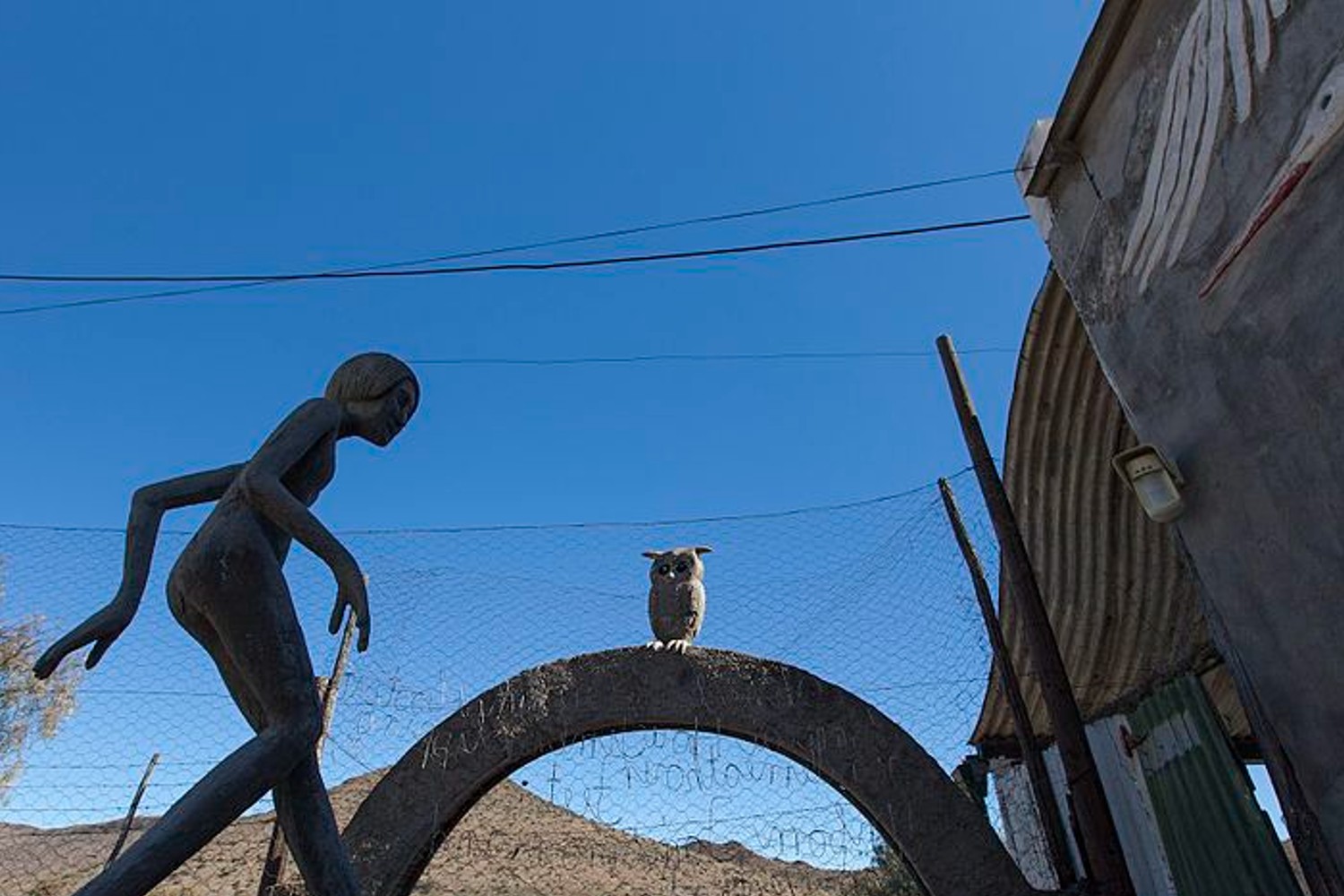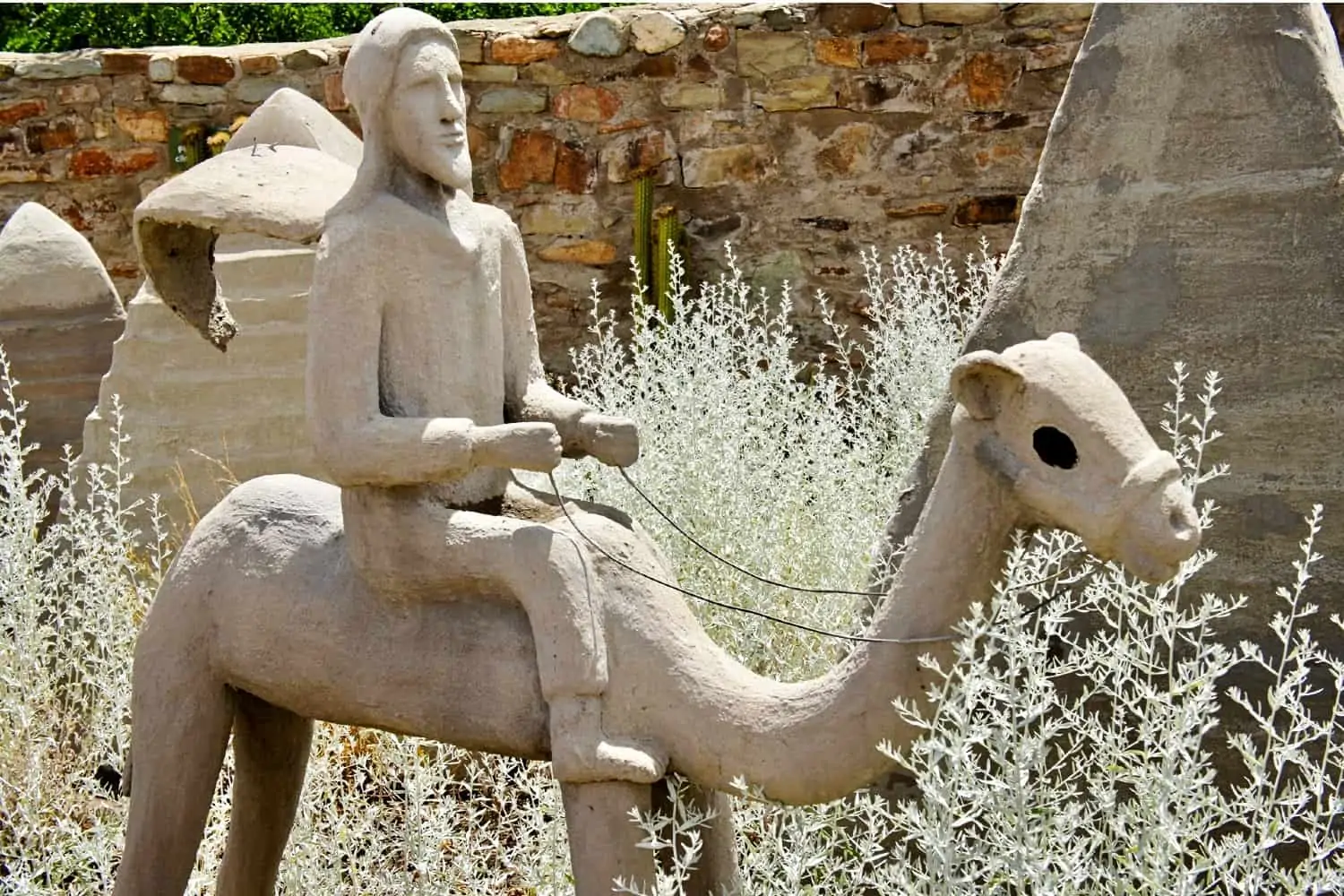The Owl House National Heritage Museum is an awe-inspiring artistic creation. Consisting of over 300 statues imagined and brought to life by Helen Martins over 12 years. Using cement, glass and any other materials at her disposal.
Where is The Owl House?
At a glance, from the outside, the Owl House appears to be a traditional Dutch home. Until one notices the extra elements such as the perching owl statues and statue-covered archway that can be seen leading into the outer space known as the camel yard.
The house is situated in Nieu-Bethesda. A little town located at the foot of the Sneeuberg Mountains in the heart of the Great Karoo. It is about 50 km from the larger town of Graaff-Reinet. The little village of Nieu-Bethesda was formed in 1875 and today, with a population of less than 2000, it relies mostly on tourism. And, although Helen Martins’ Owl House is one of the greatest allures, it also boasts a wide variety of businesses, restaurants and art galleries.
Helen Martins, the Artist
Helen Martins, the youngest of six children, was born on 23 December 1897 in Nieu Bethesda. Where she also spent most of her childhood. In later years, she traveled the country but returned to her hometown to care for her aging parents.
Once both parents had passed away, she began her creative endeavor with the goal of bringing light, colour and life into the house. And between the years of 1945 and 1976, the self-taught artists successfully created a visionary environment of the entire house and yard. It was her wish that her creation eventually be preserved as a museum.
In her later life, she became known as Miss Helen by the people of the town. A retire who over time became increasingly reclusive. Her avoidance of the public was believed to be due to two main factors. Firstly, because her work, for which she sought praise, became a subject of suspicion within the village. And secondly, her own appearance degraded fairly quickly from a combination of working with harsh materials and lack of self-care. She was said to be notorious, amongst those who knew her, for not looking after herself.
Over time, the pursuit of her vision resulted in her body taking great strain and hardship. And eventually, her longtime exposure to finely crushed glass used in many of her decorations caused her eyesight to go. Until in 1976, at the age of seventy-eight, Helen Martins took her own life by swallowing caustic soda.
How the Owl House was Created
The sculptures within the house and its yard were all created using materials available to the artist. Her main medium was cement with glass which she used to create the lifelike eyes of her pieces as well as in broken and crushed form for added decorations.
The majority of her inspiration came from Biblical texts, the works of William Blake and the poetry of Omar Khayyam, a Persian philosopher and mathematician. As a result, her relief work and hundreds of sculptures are made up of a variety of figures. From the many owls to bottle-skirted hostesses, mermaids, sun faces, pyramids, camels and pilgrims.
In the Yard, Miss Helen’s main theme was that of a procession of camels and wise men are making their way “east”. Emphasizing the rising place of the sun and moon rise, as well as the direction in which men traditionally turn for prayer. She even inscribed the words “East/Oos” on the yard’s boundary fence. Although in reality, her procession moves from north to south.
Miss Helen also employed local labourers to aid her in the creation of the outer area masterpieces that make up the Camel Yard. There were various helpers over the 12 years, however the most notable is said to be Koos Malgas. With whom she formed a long artistic relationship.
After her death in 1976, the Owl House fell into disrepair. But many members of the public expressed concern leading to the transfer of the property to the local council. Who maintained the space, with the help of support organisations such as the Friend of the Owl House (FOOH) as well as PPC cement. Then in 1991, Koos Malgas returned to restore and maintain the Camel Yard.

Conclusion
Of South Africa’s many wonders, the Owl House is definitely one of the “must-see” destinations. It is an incredibly unique creation that has inspired many who have seen it. And even led to the making of the playwright and movie based on Helen Martins called “The Road to Mecca”.
